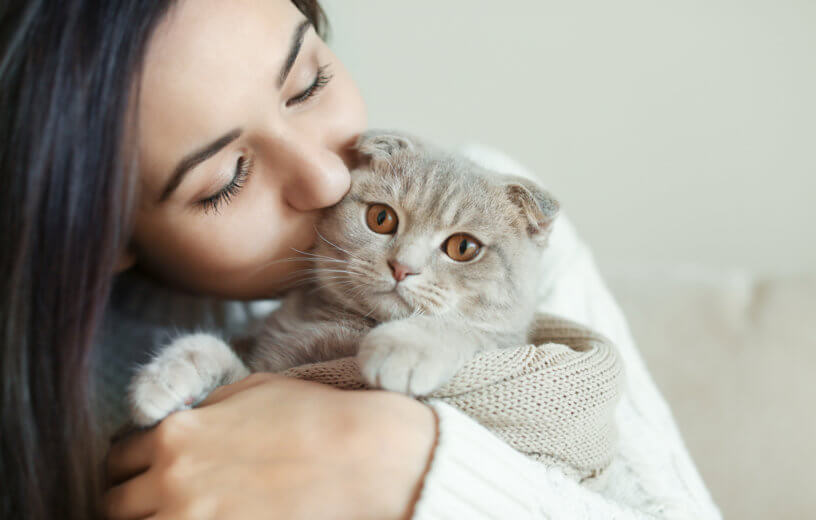CORVALLIS, Ore. — Cats often times get a bad rap as cold, unaffectionate pets in comparison to dogs. While it is certainly true that felines are a bit more withdrawn, a new study finds that cats care about their human caregivers just as much as any dog, or child!
For the first time ever, researchers from Oregon State University have concluded that cats display the same attachment styles as dogs and human babies.
“In both dogs and cats, attachment to humans may represent an adaptation of the offspring-caretaker bond,” explains lead author Kristyn Vitale in a release. “Attachment is a biologically relevant behavior. Our study indicates that when cats live in a state of dependency with a human, that attachment behavior is flexible and the majority of cats use humans as a source of comfort.”
Researchers had a group of cats participate in a “secure base test,” in which each cat spent two minutes in a room with their owner, two minutes by themselves, and then another two minutes reunited with their owner. The test’s end goal was to classify each feline’s attachment tendencies as either secure or insecure. Both dogs and human infants have taken similar attachment tests in the past.
For reference, infants or animals that display “secure-attachment” generally trust their caregivers. They look to them for protection, and even believe that their caregiver will return to them when separated.
When the cats’ owners returned for the two minute reunion phase, researchers looked to see how each pet reacted. If the cat didn’t show any signs of stress, and wasn’t surprised that their owner return, the cat was classified as having “secure-attachment.” Conversely, if upon seeing their owner the cat reacted by showing signs of stress (tail twitches, licking their lip) and either avoiding or initiating (jumping on their lap) contact, the cat was classified as having “insecure-attachment.”
These tests were conducted with both kittens and adult felines. Afterwards, a team of behavioral experts watched recorded footage of the experiment, and compared each cat’s actions to criteria usually used to assess attachment levels in dogs and human infants.
Of the 70 kittens that were suitable to be placed into one category, 64.3% were classified as securely attached and 35.7% were classified as insecurely attached. The research team was also curious if socialization training would have any impact on these statistics, so they enrolled the kittens in a six-week training course and re-administered the experiment. Surprisingly, there were no major differences in the second experiment’s results.
“Once an attachment style has been established between the cat and its caregiver, it appears to remain relatively stable over time, even after a training and socialization intervention,” Vitale says.
Vitale would go on to explain that cats, like many other domesticated animals, tend to retain several juvenile traits well into maturity and stay dependent on humans for the entirety of their lives. With this in mind, researchers then performed the same tests on a group of adult cats aged one year or older. The resulting percentages were very similar to the kitten group: 65.8% were securely-attached and 34.2% were insecurely-attached.
Furthermore, the study’s authors say they were surprised to see just how closely the percentages of secure and insecure attachments in feline groups mirrored findings among a human infant population. Among a group of infants, 65% were found to be securely attached, just .8% off from the feline group.
“Cats that are insecure can be likely to run and hide or seem to act aloof,” Vitale concludes. “There’s long been a biased way of thinking that all cats behave this way. But the majority of cats use their owner as a source of security. Your cat is depending on you to feel secure when they are stressed out.”
The study is published in the scientific journal Current Biology.
